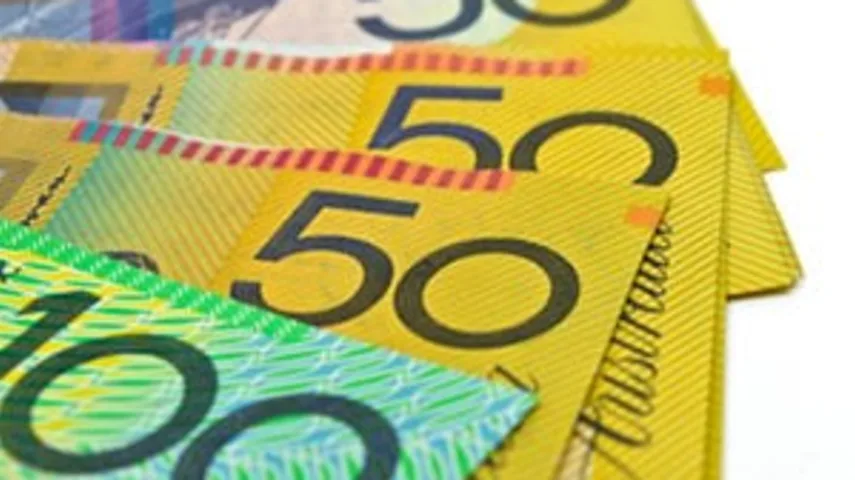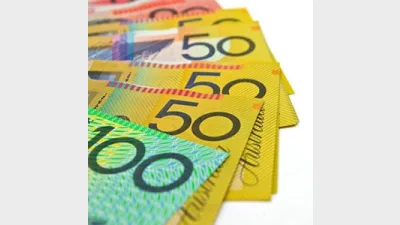Australian investors facing a currency war



Select Asset Management's Dominic McCormick suspects the recent decline in currency volatility is the calm before a much bigger storm – with significant implications for Australian investors.
Currency volatility exploded during and after the global financial crisis (GFC). However, more recently, and somewhat surprisingly, things have seemingly settled down a little.
For example, while trading at near-record highs against many currencies since the 1983 float, the Australian dollar (AUD) has traded in a relatively tight US16 cent range of 94 to 110 over the last two years (after plunging to, then rebounding strongly from a low of $US0.61 in October 2008).
Is this recent behaviour a sign that more stability for the AUD and currencies generally is in store, or the calm before a much bigger storm?
I suspect it is the latter, with significant implications for investors.
Despite the decline in volatility, a strong case can be made that recent years have seen the commencement of global “currency wars” where the value of a country’s currency has become a major policy weapon in trying to preserve or resurrect export and economic growth in a deleveraging, slow-growth world.
The evidence of this war is the direct intervention of the Swiss and Japanese authorities, and the indirect measures via extreme unconventional monetary policy in a number of other countries, especially the US.
However, recent lower volatility in many (but not all) currency pairs may signal that we may still be in the “phoney war” period where various countries are more fully developing their responses to, and strategies for, this environment. More aggressive policy moves and much greater currency volatility are most likely still ahead.
Australia’s strong fiscal position, AAA-rated status and still-positive real interest rates have led to strong demand for Australian bonds and a high currency. The latter is clearly hurting parts of the Australian economy.
However, Australia’s ability to deal with the pressures and consequences of global currency wars seems constrained by the Reserve Bank of Australia's (RBA’s) current commitment to inflation targeting and to a conventional monetary policy approach that no doubt has worked well in recent decades.
However, there seems to be some reluctance to acknowledge how dramatically global monetary and currency dynamics have changed in recent years.
For example, recent comments from the RBA have indicated some surprise that the Australian dollar has not declined with the recent decline in the terms of trade, as official and private sector demand for Australian bonds and currency has overwhelmed this effect.
In an article mid-last year (‘Challenges of a Strong Currency’ - Money Management June 21 2011) I suggested that we should not be overly surprised by the previous surge to the then-peak of $US1.10, and I made the often dangerous suggestion that “this time is different” in respect of the dynamics of the AUD/USD relationship and the broader global monetary/currency system.
Further, that excluding a collapse of the Chinese and Indian economies, those expecting a dramatic decline in the AUD back to the US60 cents and 70 cents were likely to be disappointed, given the policy actions being pursued by the various global central banks, especially the US.
Of course the RBA still has room to cut rates as a means to discourage excessive demand for the AUD, and it is likely to do so.
But what if interest rates move closer to the extremely low rates of other developed countries and the dollar remains stubbornly high?
Perhaps only then would the active intervention recently suggested by economist (and former RBA board member) Warwick McKibbin be considered. I suspect this is the endgame the RBA will ultimately be pushed towards in an increasingly dysfunctional global monetary system.
Historically, the RBA has tended to intervene only in supporting the Australian dollar in severe selloffs, thus making defensive moves. Selling strength – and effectively creating Australian dollars to do so – is a much more offensive move.
However, intervening does not seem to be in the RBA’s plans currently, and this view seems widely supported by most mainstream economists.
Time will tell whether this is an appropriate response to the current pressures on the Australian economy from what many have argued is a substantially “overvalued” currency.
It is interesting that central banks (and their heads) seemed to develop in recent decades an air of infallibility that has been slow to recede, despite the turmoil the global economy has experienced.
To think that someone entitled a biography of Alan Greenspan Maestro – the very person who arguably was the chief architect or at least the lead cheerleader of the bubbles that led to the GFC.
The gloss is certainly coming off the Federal Reserve and its current boss Ben Bernanke, but Australia’s central bank and its current head Glenn Stevens still retain that aura, particularly given the strong performance of the Australian economy through the GFC.
The big question is how much of Australia’s performance has been due to good management versus good luck.
While Ben Bernanke seems to be pushing the limits, in practice there is only so much central banks can do to manage and influence the course of the economy.
History shows that central banks probably take too much credit when things go well, and conversely are excessively blamed when things go poorly.
However, despite no Australian recession for 21 years, it’s not as if the Reserve Bank has been free from criticism or major errors in its recent history. (And I won’t even go near the recent Securency scandal).
For example, some have argued it made a mistake in raising rates in April 2008 when it was already clear the global financial and economic environment was deteriorating.
Depending on how things pan out from here, there may well be increased criticism that it has moved too slowly to cut rates in the current environment since November last year.
Going back further, there was the important decision to sell all but 80 tonnes of Australia’s 247-tonne gold reserves in mid-1997 at prices in the low $US300s (the price has gone up almost six times since).
Early last year The Australian newspaper (‘Reserve Bank’s gold sale cost us $5bn’ – January 11 2011) referred to a just-released 1997 RBA board paper recommending the sale.
The board paper justified the decision by arguing that “gold had been a poor investment, and that Australia need not worry about access to financial markets during another economic crisis”.
Clearly, it’s not only retail investors (and advisers) who make the big mistake of excessive reliance on recent history to make investment decisions.
Of course everyone makes mistakes, but one of the biggest mistakes today is to continue playing a game the same way when the fundamental rules have changed (at least in the actions and views of the other important players).
This is the risk for Australia if it remains constrained by a conventional monetary policy approach while most of the rest of the world has moved on to much more unconventional measures.
Of course all these unconventional measures could end very badly.
Currency wars, trades wars, no growth for high currency countries, inflation, and hyperinflation could all be in the mix for the future, depending on the country and policy actions. In this environment the current relative stability of the Australian dollar and other currencies won’t last.
What does all this mean for investors?
- Expect much greater currency volatility ahead across all major currencies. The Australian dollar is likely to retain an upward bias, at least while the RBA adopts a conventional approach and as long as China does not have a hard landing, suggesting some level of currency hedging for those with large overseas exposures still makes sense.
- At some point though, a rush out of Australian bonds and other assets by foreigners could see a rapid decline, and given that from a longer-term perspective the Australian dollar is clearly overvalued on a Purchasing Power Parity basis, now is a good time to diversify into other currencies and overseas assets.
- However, efforts should be made to limit exposure to those currencies subject to particularly aggressive “debasing” policies, such as the US dollar, British pound and Japanese yen. If possible, a skew to emerging market currencies (even those currently partly linked to the USD, since these links may eventually go) makes sense.
- Managed futures and other trend-following strategies are well placed to benefit from some major moves in currencies.
- Currency “volatility” is currently relatively cheap. There are a number of specialist funds that attempt to buy long-dated volatility in currency (and other assets) as a tail risk, given the possibility of extreme moves in the future.
- As “currency wars” result in fading confidence in almost all paper currencies, the role of gold as an alternative currency is likely to be further enhanced. Both official holders such as central banks and private investors are likely to increasingly value the role of gold as a currency diversifier.
Interestingly on the last point, I recently asked a gold trader from a major Australian bank whether he thought the RBA would ever buy back some gold. His response – “No, they would be too embarrassed”.
Perhaps, but in a world where the rules are changing fast, nothing should be off the table.
The problem is there remain enormous global economic imbalances and the current global exchange rate system, with the US dollar as the core, is looking frayed at the edges.
Greater future volatility will be a sign of these stresses worsening.
It is highly uncertain how it will all play out, but the worst mistake is to use the past 30 years as a reliable guide going forward.
That applies to investors, but also to those authorities that manage and influence exchange rates.
Both need to be increasingly flexible (and adequately diversified) to deal with possible major shocks ahead.
Dominic McCormick is the chief investment officer at Select Asset Management.
Recommended for you
In this episode of Relative Return Insider, host Keith Ford and AMP chief economist Shane Oliver discuss the latest shock consumer price index numbers, which rose to 3.8 per cent in October, as well as the shifting US market and calls for super funds to invest in infrastructure projects.
In this episode of Relative Return Insider, host Keith Ford and AMP chief economist Shane Oliver discuss the Reserve Bank of Australia’s cautious stance in response to persistent inflation, subdued growth prospects, and political shifts affecting the nation’s journey towards net zero emissions.
In this episode of Relative Return, host Laura Dew speaks with Rachel White, head of financial adviser services at Vanguard about how advisers can help Australians to feel confident in retirement.
In this episode of Relative Return Insider, host Keith Ford and AMP deputy chief economist Diana Mousina take a look at the Reserve Bank’s unanimous decision to leave rates on hold on Melbourne Cup Day and whether future cuts are still on the cards.








